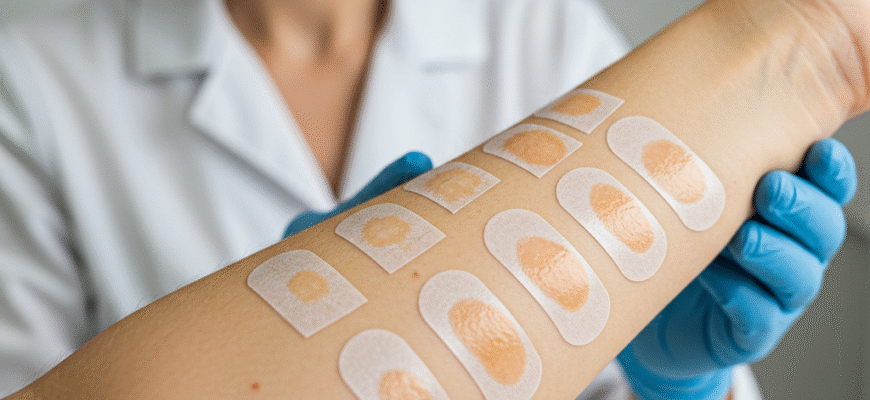Content
Why Bother Patch Testing Natural Ingredients?
It’s a common misconception: “If I can eat it, surely I can put it on my skin?” Unfortunately, skin reactivity doesn’t work that way. Your digestive system has mechanisms to break down substances that your skin barrier doesn’t. Think about lemons – great in water or on food, but applying pure lemon juice to your skin can lead to photosensitivity (making you much more prone to sunburn) and irritation due to its high acidity. Similarly, many popular DIY staples can be problematic:- Essential Oils: While fragrant and possessing certain beneficial properties, they are highly concentrated plant extracts. Used undiluted or in high concentrations, they can cause significant irritation, sensitization (leading to future allergies), and burns.
- Baking Soda: Often touted as a natural exfoliant or cleanser, baking soda has a very alkaline pH. Your skin’s natural state is slightly acidic (the acid mantle), which protects it. Disrupting this pH balance with alkaline substances can damage the skin barrier, leading to dryness, irritation, and increased susceptibility to infection.
- Raw Apple Cider Vinegar: Like lemon juice, its acidity can be too harsh for direct skin application, potentially causing burns or irritation, especially if not heavily diluted.
- Certain Spices: Ingredients like cinnamon or cloves can be potent irritants when applied topically, causing redness and a burning sensation.
- Plant Extracts/Juices: Even seemingly innocuous things like strawberry juice or celery juice can cause allergic reactions or phytophotodermatitis (a reaction triggered by sunlight after contact with certain plant chemicals) in susceptible individuals.
Understanding Potential Reactions
When you patch test, you’re primarily looking for two types of adverse reactions:- Irritant Contact Dermatitis: This is the more common type of reaction. It occurs when a substance directly damages the skin’s outer layer faster than it can repair itself. It usually appears as redness, dryness, itching, or a mild burning sensation localized to the area of contact. It’s often dose-dependent – a higher concentration or longer exposure increases the likelihood and severity of the reaction. Baking soda or undiluted essential oils often cause this type of irritation.
- Allergic Contact Dermatitis: This is a true immune system response. It happens after your skin becomes sensitized to a specific ingredient (the allergen). Upon subsequent exposure, even to tiny amounts, your immune system triggers an inflammatory reaction. This can manifest as intense itching, redness, swelling, bumps, or even blisters, and it might spread slightly beyond the initial contact area. Unlike irritation, this reaction isn’t immediate; it typically takes 12-72 hours (or sometimes longer) to develop after exposure. Essential oils, fragrances (even natural ones), and certain plant compounds are common culprits. Once you develop an allergy, you usually have it for life.
The Correct Way to Patch Test
Performing a patch test is straightforward, requiring only a little patience. Follow these steps for reliable results: 1. Choose Your Ingredient/Product: Decide what you want to test. If it’s a single raw ingredient (like an oil or juice), prepare it as you intend to use it in your final recipe. This might mean diluting an essential oil in a carrier oil (like jojoba or sweet almond oil) according to safe usage rates, or mixing a powdered clay with water. If you’re testing a finished DIY product (like a mask or lotion you’ve already mixed), use the final product itself. 2. Select a Test Site: Choose a discreet, inconspicuous area of skin that’s similar in sensitivity to where you plan to use the product, but where a potential reaction won’t be overly bothersome or visible. Good locations include:- The inner elbow
- The underside of your wrist
- Behind the ear (especially good for facial products)
- No Reaction: If the skin appears completely normal after 48 hours (or even up to 72 hours for extra caution), the ingredient or product is likely safe for you to use on a larger scale.
- Reaction Occurs: If you experience any signs of irritation or allergy, wash the area immediately and thoroughly with mild soap and water. Do not use the ingredient or product. Note which substance caused the reaction so you can avoid it in the future. If the reaction is severe or persistent, consult a healthcare professional.
Important Safety Note: Skipping a patch test might seem like saving time, but it significantly risks skin irritation or triggering allergic reactions. Remember that even ingredients commonly consumed safely can cause problems when applied topically to your unique skin. Always prioritize this simple safety check before applying any new DIY ingredient or mixture generously, especially on sensitive areas like the face.









